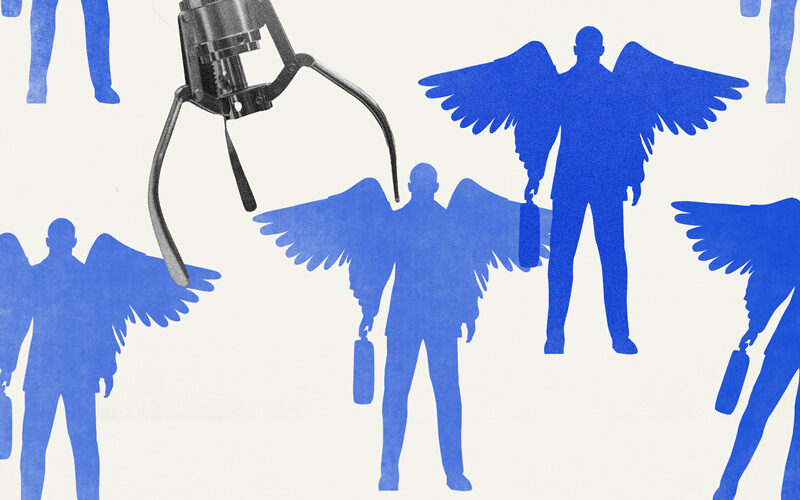Many in the startup-sphere are aware that Dropbox were the original growth hackers.
Every new member referral granted you a little extra storage space, and the software spread through corporate communities like wildfire.
In the early days of AirBnB, when someone listed their place for short stays on Craigslist, the founders reached out personally to offer their platform instead, which had a better UX and lower fees.
In the early Tinder days, VP of Marketing Whitney Wolfe visited sororities and their corresponding fraternities to recruit students onto the platform.
In an organisation so small, manual outreach is easier. And every now and then, a little bit of ingenuity launches a startup into the stratosphere.
Small but powerful
You might think bigger companies can do anything considering their budget.
But with fewer onboarded customers to manage, and fewer (or no) investors or higher-level stakeholders to convince of your plan, startups are much freer to test growth tactics that might not scale.
There are no levels of approval from legal or accounts. You can build communities and drive social media pushes without meddling from your brand manager. You can run multiple experiments and iterations, tweaking and replicating them easily.
Best of all, you devise it – not a bought-and-paid-for “viral marketing agency” (yes that’s a thing now) – hitting that note of sincerity and authenticity that’s so important to modern audiences.
Of course the downside of this activity is that it is by nature unscalable. You can’t hire impersonators to distribute that personal visit from the founder. You can’t reply to 1000 emails or handwrite 10,000 thank you cards.
So if you can only reach 100 people in a unique and targeted way within a month, what’s the benefit?
Three things:
- Keeping early churn rates down. You might not have many customers, so the ones you have, you want to keep.
- Creating superfans. With the extra attention and exclusivity they can give, small startups have the chance to make their buyers into brand evangelicals. Small but loyal user bases are also great at…
- Spreading the word. Creating an experience translates to getting talked (or much more importantly, posted) about.
Product virality is your friend here. Personable efforts make great interest pieces, whether you’re posting them yourself or others are posting about you.
And it’s often a self-fulfilling prophecy. Contrary to popular belief, virality rarely “just happens” for big brands. Pull back the curtain and you’ll usually find deliberate, highly strategic efforts (and a lot of very non-viral flops) to “stumble across” virality.
Scaling back your non-scaling
As your user base grows, experimentation should slow. It’s boring, but it’s serious business time now.
When investors come on board, time is money. Doing things that don’t bring direct revenue gets harder to justify. And the fun stuff needs to be replaced with proven strategy and trackable metrics.
You should reach a point where you’ve identified what works in terms of customer outreach, and can start pivoting to scalable, automatable methods.
This means broader scale customer acquisition. Sticking to one or two CA channels, drawing on what you learned in your hacking phase, usually works best.
As you iterate your CA model, customers will struggle and some will inevitably be lost. Some won’t like the changes on your website, the new tone of your social feed, or the fact they now get passed to customer service rather than the founding team.
But there are multiple ways of appeasing them. Like:
- Rewarding their loyalty, i.e. keeping them on original, legacy, or grandfathered subscription plans
- Lean on exclusivity e.g. a creating higher or ‘premium’ tier where points, rewards or discounts are greater
- Not leaving the community behind. You won’t be hopping on a Twitter Q&A or answering Instagram messages every day, but you should still make an appearance sometimes.
Old customer vs. right customer
According to the old business school staple – it’s 5 times cheaper to retain a customer than secure a new one. But this is a pretty old fashioned rule of thumb, and was based on mass production models and time spent hard selling.
We have predictive analytics now. We can calculate lifetime value (CLV). And we have vastly more acquisition channels at our disposal. Sometimes, it’s okay to let the fire burn.
Probably the most famous (and albeit, extreme) example of controlled burning is the early PayPal days where the 3-person customer service team was receiving 10,000 complaints a month. Phones were ringing 24 hours a day. Their answer? Turn them off.
PayPal focused on growing their user base exponentially until they had the resources to set up a 200-person call centre to care for their existing customers. It was a nail-biting fire to let burn in the face of real anger from real people, many of whom had businesses relying on PayPal’s financial services.
But cofounder Reid Hoffman said, “I wouldn’t have solved it a moment sooner. Provide whatever service you can as long as it doesn’t slow us down – and that may mean no service.”
What’s most important now is connecting with the right customers. The ones who will suit your future business, not (necessarily) the ones who were there in the beginning.
Such a drastic approach may not be right for everyone, and the timing of switching from non-scaling activities to scalable customer acquisition is crucial. You must be at a point where you’re able to replace those lost customers if necessary.
In your early days, doing things that don’t scale is entirely okay. And if nothing else, early guerilla marketing activity makes for great brand stories when you’ve cemented success with your customers down the track.










